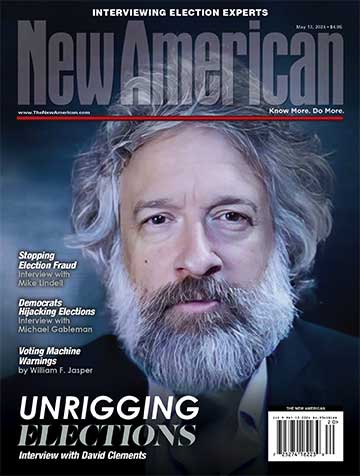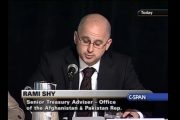
The debate about the shooting of Michael Brown by police officer Darren Wilson got heated on NBC’s Meet the Press on November 23 in an exchange between former New York City Mayor Rudy Giuliani and Michael Eric Dyson, an African-American academic, Princeton Ph.D. in religion, political analyst for MSNBC, and professor of sociology at Georgetown University.
“We’re talking about the exception here,” contended Giuliani, regarding the shooting in Ferguson.
The real issue is “the fact that 93 percent of (murdered) blacks in America are killed by other blacks,” Giuliani asserted. “I would like to see the attention paid to that, that you are paying to this.”
About the complaint of heavy police presence in black communities, Giuliani said “white police officers wouldn’t be there if you weren’t killing each other 70 to 75 percent of the time.”
Dyson, responding, said “this is a defense mechanism of white supremacy at work in your mind, sir.”
Replying to Giuliani’s proposal that the focus on violence and race in America should pivot toward reducing crime in the black community (“What about the poor black child that is killed by another black child?,” asked Giuliani. “Why aren’t you protesting that?”), Dyson said Giuliani’s remarks “reinforce a problematic perspective.”
Whether the former mayor’s perspective is “problematic” is debatable, but Giuliani, former United States associate attorney general and former U.S. attorney for the Southern District of New York, had his numbers right.
The 93 percent of black homicide victims being killed by other blacks comes straight from the federal government’s official crime statistics.
“Black Victims of Violent Crime,” a 2007 report from the Bureau of Justice Statistics by Dr. Erika Harrell, BJS statistician, states that “about 93 percent of black homicide victims in single victim and single offender homicides were murdered by someone of their race.”
Blacks were the “victims of an estimated … 8,000 homicides in 2005,” reported Harrell. “While blacks accounted for 13 percent of the U.S. population in 2005, they were the victims … in nearly half of all homicides.”
Among black males, the rate of crime is even more disproportionate than among blacks overall. Black males, approximately 6.5 percent of the U.S. population, “accounted for about 52 percent (or 6,800) of the nearly 13,000 male homicide victims in 2005,” reported Harrell. “Black victims of homicide were most likely to be male — 85 percent.”
Applying the 93 percent figure to black male homicide victims who are murdered by other blacks, that translates to 6,324 of the 6,800 murdered black males s in 2005 being killed by other blacks, primarily by black males.
That averages out to between 17 and 18 black males killed per day by other blacks, disproportionately by young black males.
In contrast, regarding white police officers killing blacks, USA Today reported on August 14 that “nearly two times a week in the United States, a white police officer killed a black person during the seven-year period ending in 2012,” based on FBI calculations. “On average, there were 96 such incidents among at least 400 police killings each year that were reported to the FBI by local police.”
That’s 96 blacks per year killed by police, on average, or less than 2 percent of the aforementioned 6,324 black males killed in one year, 2005, by other blacks.
“Thousands of blacks were being killed every year” in New York City when he came into office as mayor in 1994, Giuliani said on the day after his Meet the Press appearance. That number, he said, dropped to “about 200” per year by the time he left office eight years later.
“I probably saved more black lives as mayor of New York than any mayor in the history of this city,” said Giuliani. “I’d like to see if Dr. Dyson has ever saved as many lives in his community as I’ve saved.”
Photo of casket containing the body of Michael Brown: AP Images
Ralph R. Reiland is an associate professor of economics and the B. Kenneth Simon professor of free enterprise at Robert Morris University in Pittsburgh.



